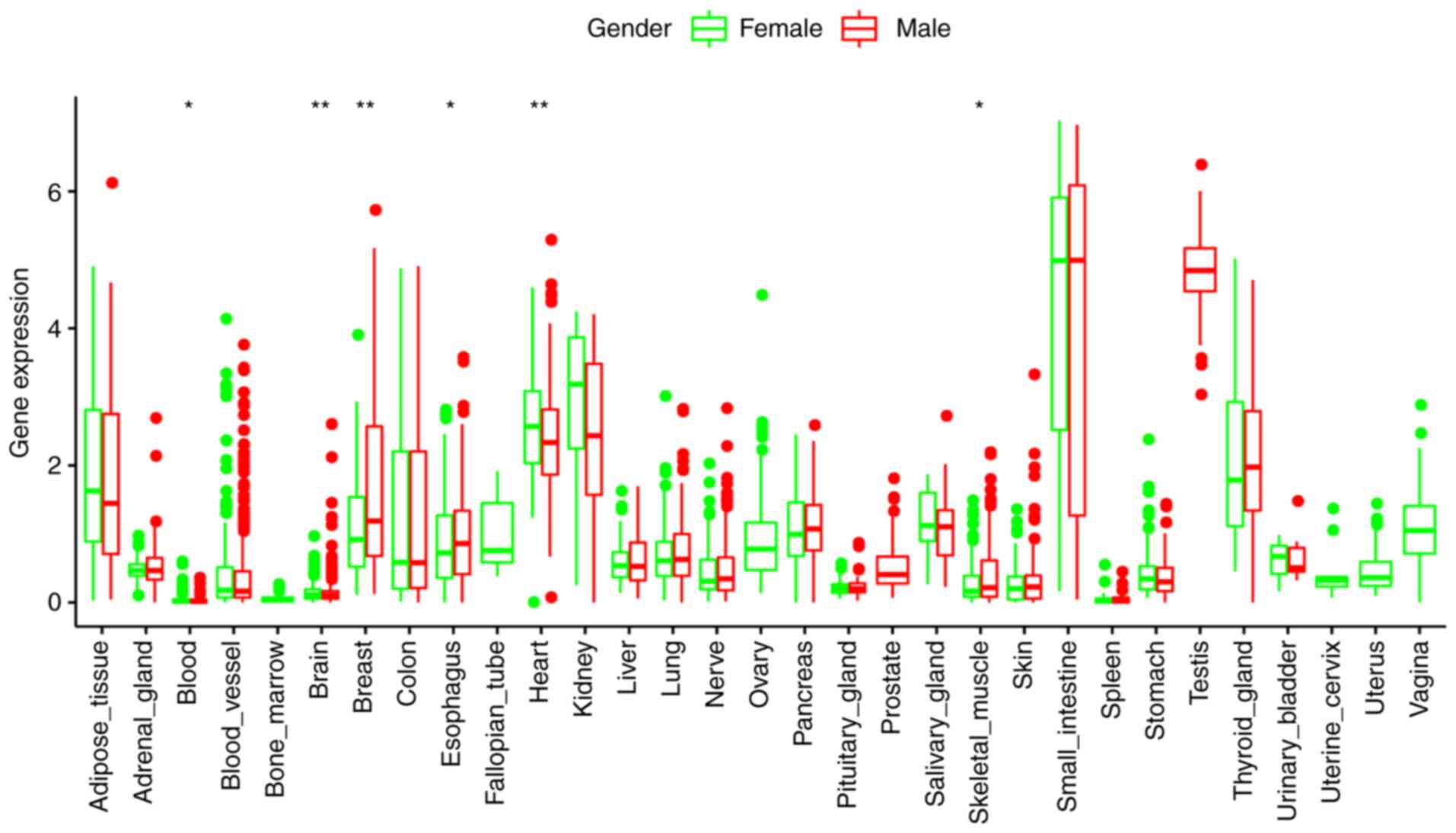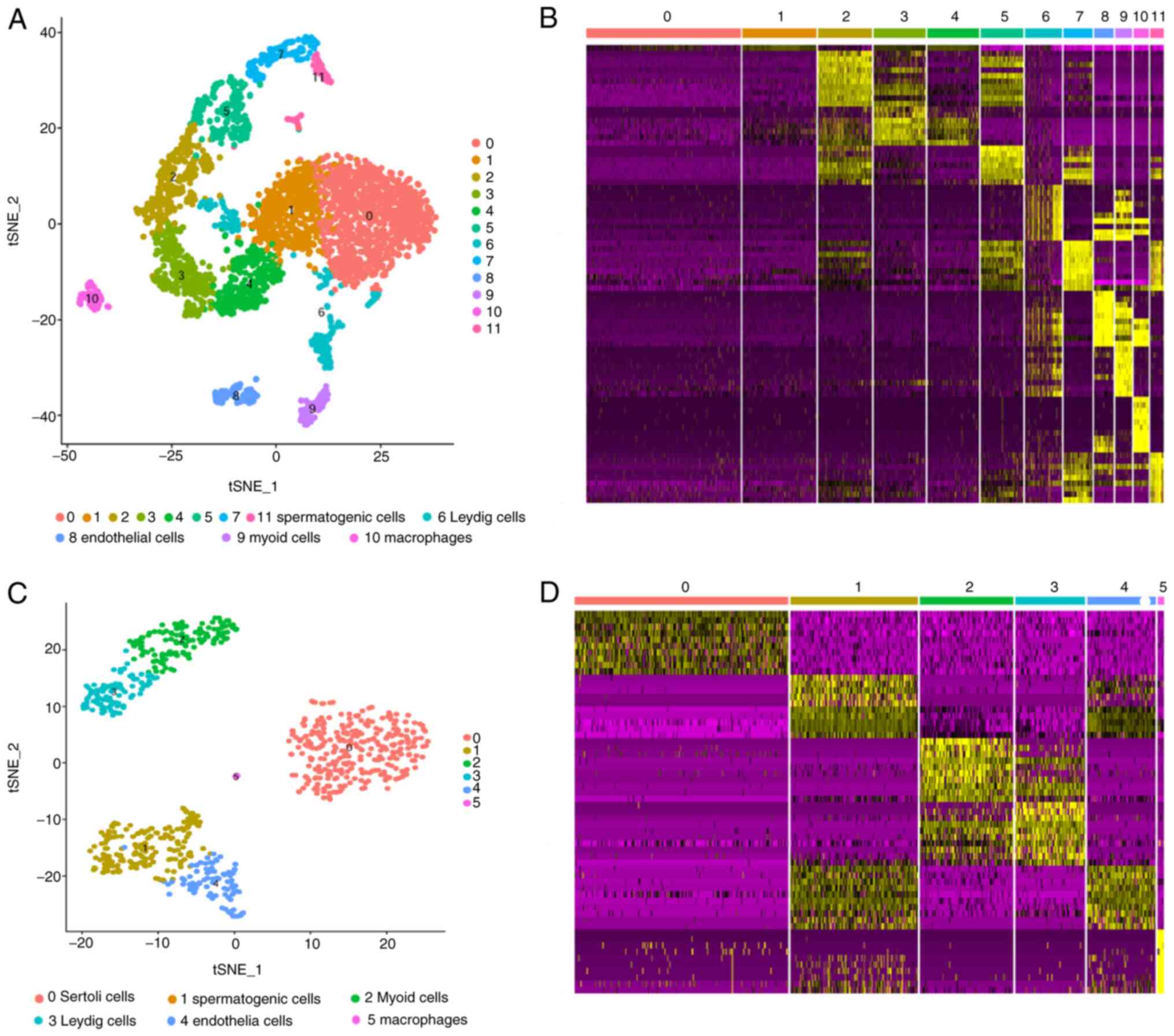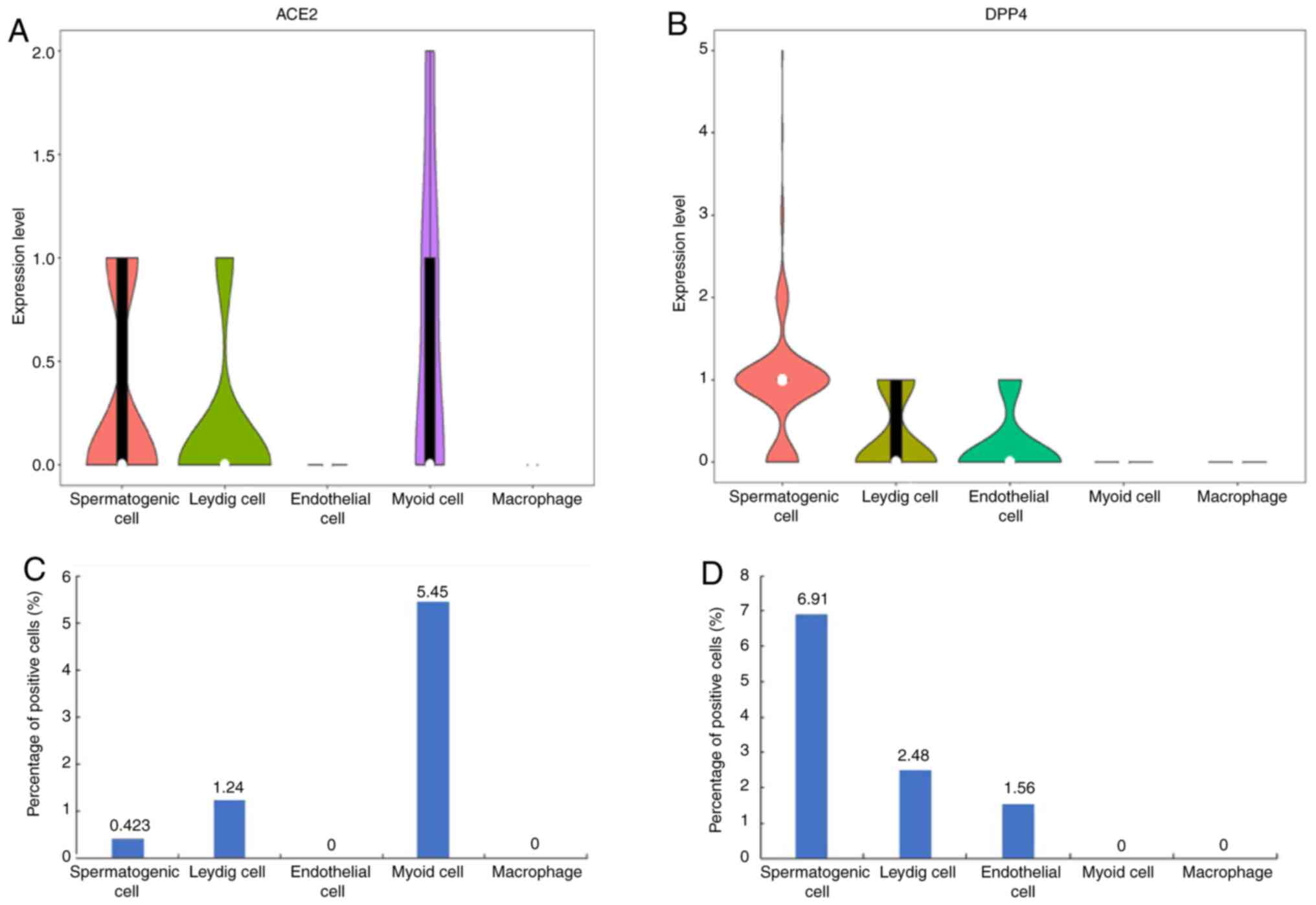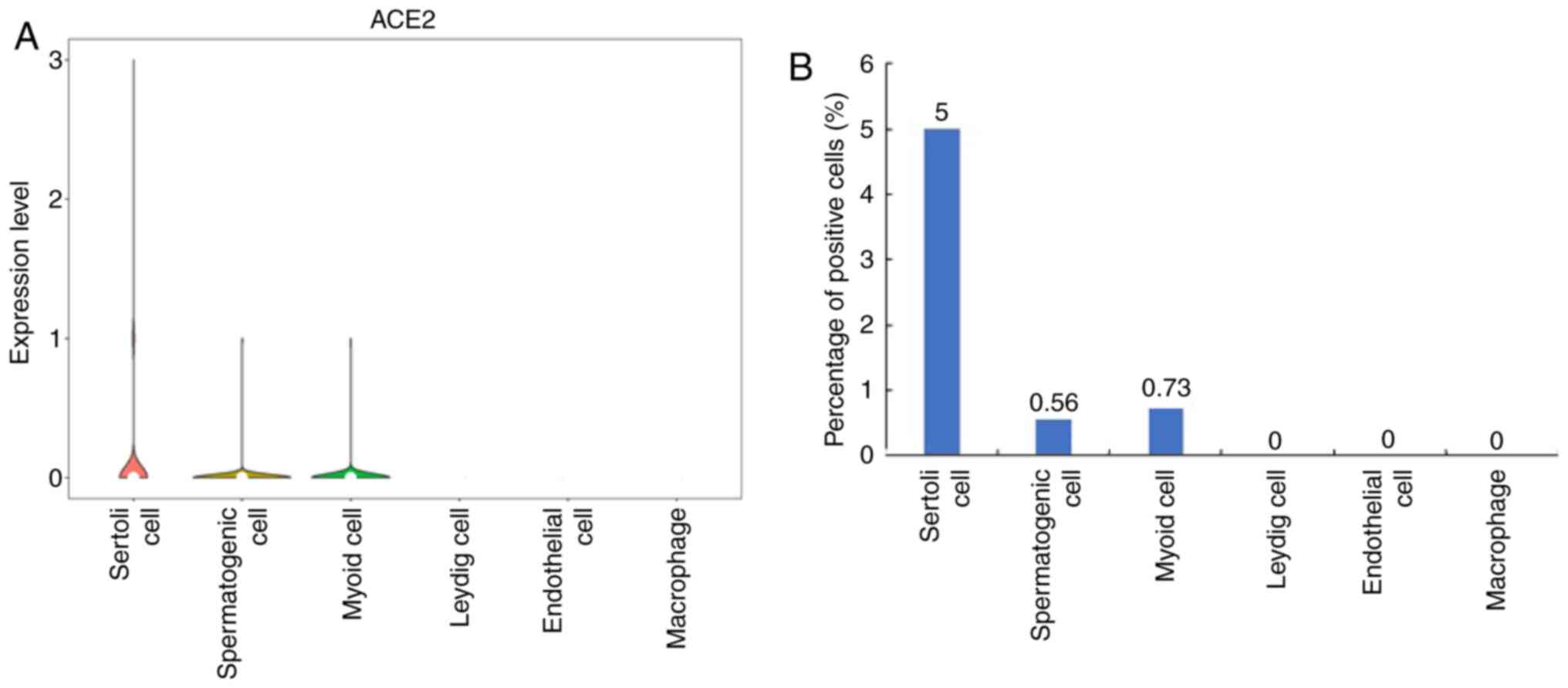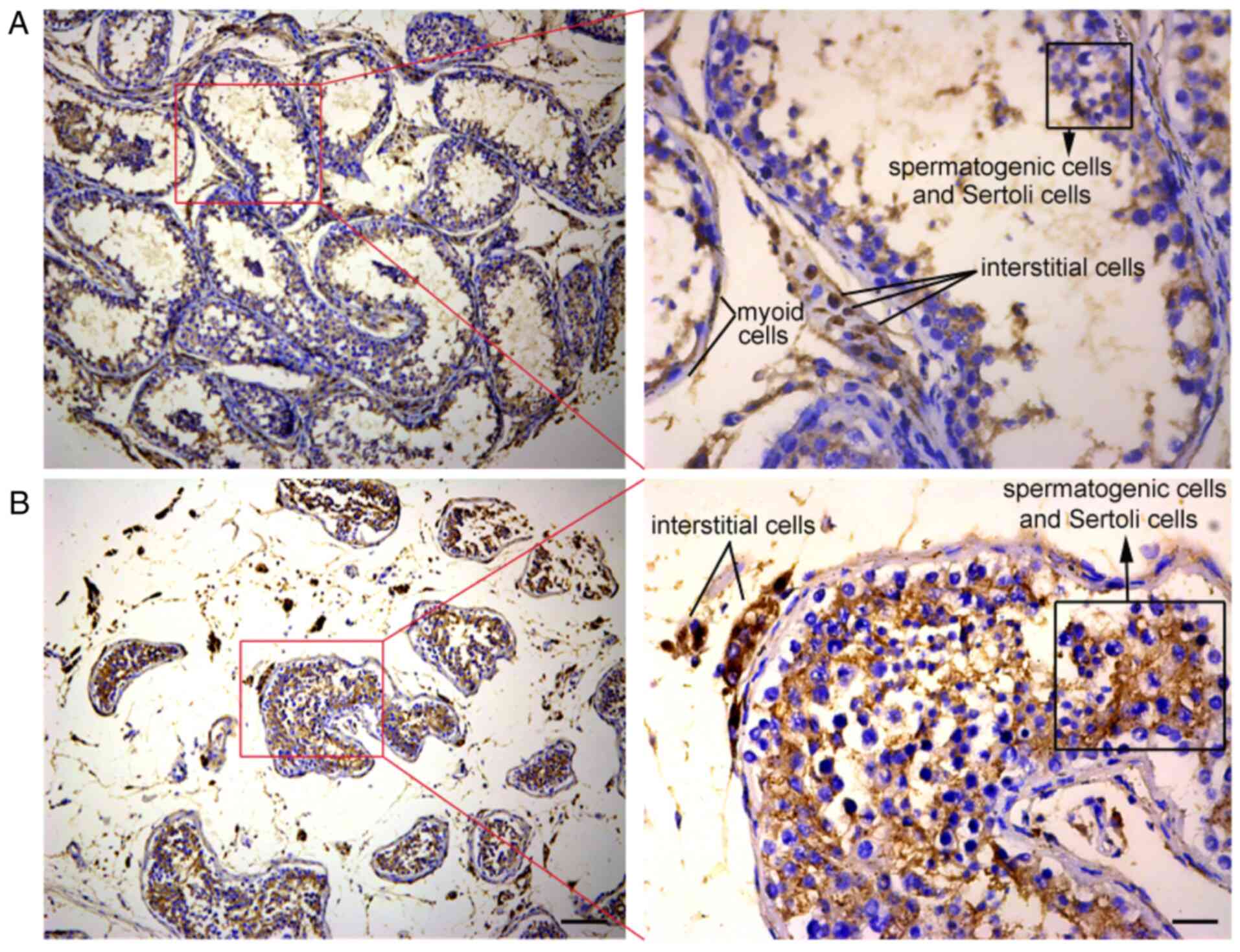|
1
|
Xu B, Yao XH, Ping YF, Yu SC, Shi Y, Luo
T, et al: Autopsy of COVID-19 victims in China. National Science
Review 2020. https://academic.oup.com/nsr/advance-article/doi/10.1093/nsr/nwaa123/5854209?searchresult=1.
|
|
2
|
Chen N, Zhou M, Dong X, Qu J, Gong F, Han
Y, Qiu Y, Wang J, Liu Y, Wei Y, et al: Epidemiological and clinical
characteristics of 99 cases of 2019 novel coronavirus pneumonia in
Wuhan, China: A descriptive study. Lancet. 395:507–513.
2020.PubMed/NCBI View Article : Google Scholar
|
|
3
|
Hayashi T, Abiko K, Mandai M, Yaegashi N
and Konishi I: Highly conserved binding region of ACE2 as a
receptor for SARS-CoV-2 between humans and mammals. Vet Q.
40:243–249. 2020.PubMed/NCBI View Article : Google Scholar
|
|
4
|
Zhou J, Li C, Zhao G, Chu H, Wang D, Yan
HHN, Poon VKM, Wen L, Wong BHY, Zhao X, et al: Human intestinal
tract serves as an alternative infection route for Middle East
respiratory syndrome coronavirus. Sci Adv.
3(eaao4966)2017.PubMed/NCBI View Article : Google Scholar
|
|
5
|
Guan WJ, Ni ZY, Hu Y, Liang WH, Ou CQ, He
JX, Liu L, Shan H, Lei CL, Hui DSC, et al: Clinical characteristics
of coronavirus disease 2019 in China. N Engl J Med. 382:1708–1720.
2020.PubMed/NCBI View Article : Google Scholar
|
|
6
|
Huang C, Wang Y, Li X, Ren L, Zhao J, Hu
Y, Zhang L, Fan G, Xu J, Gu X, et al: Clinical features of patients
infected with 2019 novel coronavirus in Wuhan, China. Lancet.
395:497–506. 2020.PubMed/NCBI View Article : Google Scholar
|
|
7
|
Xu J, Qi L, Chi X, Yang J, Wei X, Gong E,
Peh S and Gu J: Orchitis: A complication of severe acute
respiratory syndrome (SARS). Biol Reprod. 74:410–416.
2006.PubMed/NCBI View Article : Google Scholar
|
|
8
|
Ma L, Xie W, Li DY, Shi L, Mao Y, Xiong Y,
Zhang Y and Zhang M: Effect of SARS-CoV-2 infection upon male
gonadal function: A single center-based study. medRxiv: Mar 30,
2020 (Epub ahead of print). doi:
org/10.1101/2020.03.21.20037267.
|
|
9
|
Li W, Moore MJ, Vasilieva N, Sui J, Wong
SK, Berne MA, Somasundaran M, Sullivan JL, Luzuriaga K, Greenough
TC, et al: Angiotensin-converting enzyme 2 is a functional receptor
for the SARS coronavirus. Nature. 426:450–454. 2003.PubMed/NCBI View Article : Google Scholar
|
|
10
|
Kuiken T, Fouchier RA, Schutten M,
Rimmelzwaan GF, van Amerongen G, van Riel D, Laman JD, de Jong T,
van Doornum G, Lim W, et al: Newly discovered coronavirus as the
primary cause of severe acute respiratory syndrome. Lancet.
362:263–270. 2003.PubMed/NCBI View Article : Google Scholar
|
|
11
|
Wan Y, Shang J, Graham R, Baric RS and Li
F: Receptor recognition by the novel coronavirus from Wuhan: An
analysis based on decade-long structural studies of SARS
Coronavirus. J Virol. 94(e00127)2020.PubMed/NCBI View Article : Google Scholar
|
|
12
|
Letko M, Marzi A and Munster V: Functional
assessment of cell entry and receptor usage for SARS-CoV-2 and
other lineage B betacoronaviruses. Nat Microbiol. 5:562–569.
2020.PubMed/NCBI View Article : Google Scholar
|
|
13
|
Zhou P, Yang XL, Wang XG, Hu B, Zhang L,
Zhang W, Si HR, Zhu Y, Li B, Huang CL, et al: A pneumonia outbreak
associated with a new coronavirus of probable bat origin. Nature.
579:270–273. 2020.PubMed/NCBI View Article : Google Scholar
|
|
14
|
Zhang H, Kang Z, Gong H, Xu D, Wang J, Li
Z, Li Z, Cui X, Xiao J, Zhan J, et al: Digestive system is a
potential route of COVID-19: An analysis of single-cell
coexpression pattern of key proteins in viral entry process. Gut.
69:1010–1018. 2020.
|
|
15
|
Liang W, Feng Z, Rao S, Xiao C, Xue X, Lin
Z, Zhang Q and Qi W: Diarrhoea may be underestimated: A missing
link in 2019 novel coronavirus. Gut. 69:1141–1143. 2020.PubMed/NCBI View Article : Google Scholar
|
|
16
|
Qi C, Wei B, Zhou W, Yang Y, Li B, Guo S,
Li J, Ye J, Li J, Zhang Q, et al: P-selectin-mediated platelet
adhesion promotes tumor growth. Oncotarget. 6:6584–6596.
2015.PubMed/NCBI View Article : Google Scholar
|
|
17
|
Ding Y, He L, Zhang Q, Huang Z, Che X, Hou
J, Wang H, Shen H, Qiu L, Li Z, et al: Organ distribution of severe
acute respiratory syndrome (SARS) associated coronavirus (SARS-CoV)
in SARS patients: Implications for pathogenesis and virus
transmission pathways. J Pathol. 203:622–630. 2004.PubMed/NCBI View Article : Google Scholar
|
|
18
|
Zhao JM, Zhou GD, Sun YL, Wang SS, Yang
JF, Meng EH, Pan D, Li WS, Zhou XS, Wang YD, et al: Clinical
pathology and pathogenesis of severe acute respiratory syndrome.
Zhonghua Shi Yan He Lin Chuang Bing Du Xue Za Zhi. 17:217–221.
2003.PubMed/NCBI(In Chinese).
|















